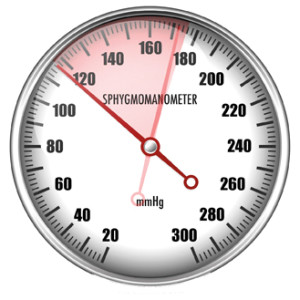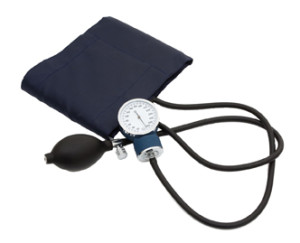What Blood Pressure Numbers Really Mean
Posted on March 1, 2014 by bob in In Every Life
Knowing what your blood pressure (BP) numbers mean, and how your results trend, can help you be more involved in your health promotion and disease prevention efforts. The two numbers of a BP reading evaluate multiple aspects of circulation.
— Ability of arteries to stretch: Narrowed or calcified arteries decrease elasticity, the stretch and recoil that accommodates the changing volume of the circulating blood.
— Volume of circulating blood: the amount of fluid going through the space within the blood vessels.
— Amount of resistance the heart must overcome to pump blood throughout the body, which involves the thickness (viscosity) of blood
An instrument is used to briefly obstruct arterial blood flow, usually above one elbow. As the obstruction is released, changes in vibrations from blood flow in the artery are measured to assess pressure. The higher number (systolic) measures pressure in the arteries when the heart contracts. The lower number (diastolic) measures pressure in the arteries when the heart is relaxed and filling with blood. The difference obtained when subtracting the smaller from the larger number is the pulse pressure (usually about 30 to 50).
The risk if these numbers are not accurately identified is that hypertension will not be recognized, which has contributed to its name “the silent killer”. Inaccurate pressure levels may be documented if the first vibrations are missed when the cuff pressure is not tight enough initially. Or, the first vibrations may be missed if they disappear briefly (called an ausculatory gap). Auscultary gap is more frequent in those with high blood pressure or peripheral arterial disease.
Blood pressure is influenced by several factors:
— Artery elasticity decreases due to rigidity or narrowing from atherosclerosis (fat deposits in the lining of blood vessels) that can accompany aging.
— Pressure is usually lower during nighttime, peaking during late morning or early afternoon. However, effects of circadian rhythms can be altered by medication times and their peak effect.
— Activity or exercise can increase pressure due to more blood being pumped, but regular exercise helps strengthen the heart to overcome this.
— Emotional or painful experiences can increase pressure by nervous system stimulation.
— Lack of hydration or effects of diuretics can decrease the volume of circulating blood and lower blood pressure.
— Salt can cause fluid retention, thus increasing blood volume and pressure.
— Chemicals such as nicotine, caffeine, or cocaine constrict arteries and thereby raise BP.
 Another important factor is change in position. Postural (orthostatic) hypotension is a sudden temporary drop in BP when rising from a reclining position. Sudden BP drops can result in dizziness or fainting, increasing risk for falls. This is evaluated by measuring BP while lying on your back, then while seated, then while standing.
Another important factor is change in position. Postural (orthostatic) hypotension is a sudden temporary drop in BP when rising from a reclining position. Sudden BP drops can result in dizziness or fainting, increasing risk for falls. This is evaluated by measuring BP while lying on your back, then while seated, then while standing.
Orthostatic hypotension may only occur after a meal, when much of the blood volume is diverted to the stomach and intestines to digest food, or after taking a hot shower or bath when blood volume is near the skin. Resting during these times can decrease fall risk. The American Heart Association (AHA) reports that people with orthostatic hypotension may have a higher risk of developing heart failure.
New guidelines for BP treatment options were developed in 2013 by the National Heart Lung and Blood Institute and AHA. Going forward, the AHA and the American College of Cardiology (ACC) have joint management responsibility for developing guidelines. Discuss these changes with your healthcare provider.
Resources: http://newsroom.heart.org (enter ‘sudden blood pressure drop’ in search bar)
Arlene H. Morris, EdD, RN, CNE is Professor of Nursing, Auburn Montgomery School of Nursing. Reach her at amorris@aum.edu.










